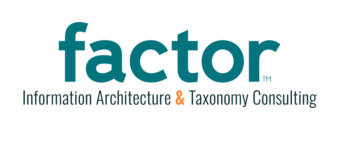Semantic Data New York 2025
Agenda
We are busy developing an exciting agenda for Semantic Data New York 2025: Taxonomy, Ontology, and Knowledge Graphs so keep your eyes peeled for details. In the meantime, check out the first 5 sessions confirmed:
Sign up for our mailing list to be the first to hear about updates on the agenda and speakers.
If you are interested in speaking at this conference, please contact Feyisayo Borisade at FeyisayoB@henrystewart.co.uk.
Language, Semantics, and the Shaping of “Truth”
Context:
Language is a tool. From our first grunts, whoops, and mutterings as Homo sapiens, we have used language to communicate - but also to persuade and control. In a world of growing complexity, uncertainty, and fractaled meaning, we still attempt to organize and find meaning through the expression of language.
Perceived meaning is often dependent on the language we use. With language we can misinform, but we can also use it to create order and stability.
The war of words is the war for meaning, and semantic data specialists are at the forefront of shaping perceived meaning.
The Semantic Data Keynote:
Ahren Lehnert, Principal Taxonomist at Nike, identifies three trends, makes three predictions, and tables three wild guesses about the present and near future of semantic data.
Covering:
- How corporations integrate and capitalize on graph databases, machine learning, and generative AI.
- Human-machine interactions and knowledge graphs.
- Whether we have finally reached a tipping point in automatically generating taxonomies.
- The future of information wars.
Ahren Lehnert, Principal Taxonomist, Nike
The Ontology Pipeline Explained
Effective knowledge orchestration demands more than data aggregation; it requires semantic coherence across diverse sources.
What it is:
The Ontology Pipeline is a framework for building a semantic knowledge infrastructure, with iterative steps to guide the process.
What it does:
From controlled vocabularies and taxonomies through thesauri and formal ontologies to rich knowledge graphs, the Ontology Pipeline creates a healthy knowledge ecosystem bringing together disparate data, under a shared semantic model.
The framework resolves semantic heterogeneity, enhances interoperability, and unlocks advanced analytics and knowledge discovery.
Through practical use cases from streamlined data integration to empowered decision-making, a demonstration of how the Ontology Pipeline transforms fragmented information into semantically rich, high-value insights.
Jessica Talisman, Senior Information Architect, Adobe
How Asset Tags help make Better AI
Practical guidance on the art of tagging
- How taxonomy and other metadata tags help improve AI responses
- How to identify areas of potential AI hallucinations
- How to increase the accuracy of AI outputs.
Ashleigh Faith, Director of Innovation, AI, Knowledge Graph, and Semantic Search, EBSCO Information Services
Scholastic's Knowledge Graph
Building a Publishing Platform created by Humans and AI
My experience:
A career spent working with photos, videos, music, and books has provided me ample opportunities to experiment with AI solutions for content tagging and metadata generation. From counting the number of people in a photo to applying keywords to kittens to writing fun facts about pop stars, AI-powered tools can perform a lot of mundane tasks. I’ve evaluated the work of these “robots” for over a decade, and I’ve recommended ways to leverage automation for scale, while still adhering to the level of quality demanded by human end users.
What we do at Scholastic:
At Scholastic, it is particularly important to ensure that the methods used to describe educational content satisfy the needs of teachers, parents, and students. In addition to tagging topics and keywords, we also need to tag content with national and state-governed subject-specific educational standards, as well as with skills or learning competencies.
Our focus:
Scholastic Education Solutions offers a wide range of digital products. The goal of the new platform is to provide a unified experience for users. There will be many types of content represented on the platform from magazine articles to quizzes to lesson plans to slideshows to books. This content will need to be consistently tagged with metadata including topics, skills, and educational standards.
The solutions we are deploying:
A knowledge graph with a customized and evolving semantic layer will provide the foundation for the platform. To populate the graph, we are inserting AI technologies at multiple ingestion points to speed up the process of identifying topics, aligning content to educational standards, and ultimately, tagging content with topics, skills, and standards for retrieval.
AI is helping us create a robust taxonomy for topics and skills and to identify potential relationships to formalize in our ontological properties, based on an analysis of the content itself and the connections uncovered in the process. AI is helping to recommend educational standards that align to our content, so we can reveal both strong matches and the more nuanced correlations.
By inserting humans-in-the-loop – editors and other subject matter experts – at the correct points in the flow, we can vet the AI-suggestions for accuracy and completeness and then confidently encourage users to explore the graph in the platform experience to discover Scholastic content serendipitously.
Tracy Forzaglia, Information Architect, Ontology & Strategy, Scholastic
Creating Taxonomy Governance in a Platform Environment
The position up to now:
For a long time much of HealthStream’s’ taxonomy has remained static, hard coded into production environments that couldn’t be updated without development efforts. As a result, changes have not been made in years due to competing priorities. As part of its evolution into a platform solution HealthStream is beginning to offer API services for taxonomy.
The challenge now faced:
While this gives the taxonomy team more ownership of the taxonomies, it also creates the need for formal governance. As multiple products depend on these taxonomies—often tied to individual user experiences, updates must be handled with care.
Our response:
New policies are being developed for areas that previously lacked them, and a clear, consistent communication and scheduling process is being established to guide future changes.
We are taking advantage of the move to API distribution, treating it as a chance to implement significant improvements.
- Enhanced taxonomies using SKOS formatting and SPARQL queries are enabling richer, more flexible data feeds than legacy relational databases allowed.
- A new mapping structure is being introduced to support downstream product migrations.
The talk will cover the strategies adopted and the lessons learned so far as we create a taxonomy governance from scratch, balancing:
- Agility with control.
- Innovation with stability
Insights into how to:
- Design policies
- Create change management protocols
- Collaborate across teams to ensure taxonomy changes are both sustainable and scalable.
Laura Rodriguez, Metadata and Taxonomy Manager, Healthstream









